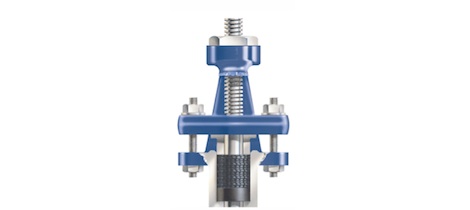Recent consent decrees are requiring emission limits for valves and packing to remain below 100 ppm for five years. With the EPA estimating 60% of fugitive emissions being attributed to valves, emissions control products have become a primary focus for valve and valve packing manufacturers.
The terms we must all become very familiar with are “Certified Low-Leaking Valves” and “Certified Low-Leaking Valve Packing Technology” as defined by the EPA in many consent decrees. And most recently the term “Low E Technology” has been added to this list. These definitions not only define performance parameters, but, require a written guarantee to be provided by the valve manufacturers and packing manufacturers.
Can your valve designs and packing technology meet these EPA consent decree requirements?
“Certified Low-Leaking Valve Packing Technology” shall mean valve packing technology for which a manufacturer has issued either: (i) a written guarantee that the valve packing technology will not leak above 100 ppm for five years; or (ii) a written guarantee, certification or equivalent documentation that the valve packing technology has been tested pursuant to generally-accepted good engineering practices and has been found to be leaking at no greater than 100 ppm.
“Certified Low-Leaking Valves” shall mean valves for which a manufacturer has issued either: (i) a written guarantee that the valve will not leak above 100 parts per million (ppm) for five years; or (ii) a written guarantee, certification or equivalent documentation that the valve has been tested pursuant to generally-accepted good engineering practices and has been found to be leaking at no greater than 100 ppm.
New “Low E Technology” includes the above with the added requirement that the manufacturer has test documentation based on accepted engineering practices that documents life cycle and emissions performance.
Many test protocols exist that are designed to measure the performance of valves and packing products. The two most commonly used protocols are API standards and ISO 15848-1. The API standards utilize methane as the media and Method 21 to measure emissions while the ISO test typically uses helium as the media with vacuum as the leak detection method. It is important to note the EPA only recognizes emission testing conducted utilizing Method 21.
For many users in the United States, API 622 2nd Edition has become the standard for measuring emission performance for valve packing. Since the EPA only recognizes test results performed using Method 21; API 622 2nd Edition is a logical choice. Although this test allows for leakage up to 500ppm with one packing adjustment, most users have elected to limit leakage to 100ppm with no packing adjustments as the minimum standard for acceptance. This correlates ideally with the API 624 valve type test standard that should soon be published. API 624 will be a pass/fail test requiring an API 622 certified packing to conduct the test with maximum allowable leakage being 100ppm without a packing adjustment.
Driven by consent decree mandates, and anticipation of API 624 becoming a requirement for valve approvals by users operating in the US, many valve manufacturers will be forced to evaluate the performance of their existing valve designs and packing technology. Users under consent decrees are requiring written warranties for 5 years at less than 100ppm from both the valve and packing manufacturers. Currently there are only a limited number of valve manufacturers that have the ability to offer this type of warranty. However there are manufacturers that do meet this requirement and have taken advantage of this opportunity by marketing their valves to separate themselves from competition. Additionally, valve manufacturers who have already made the decision to shift their product offering to “Certified Low-Leaking Technology” as a standard are being recognized by the EPA.
For more information, visit www.chesterton.com




